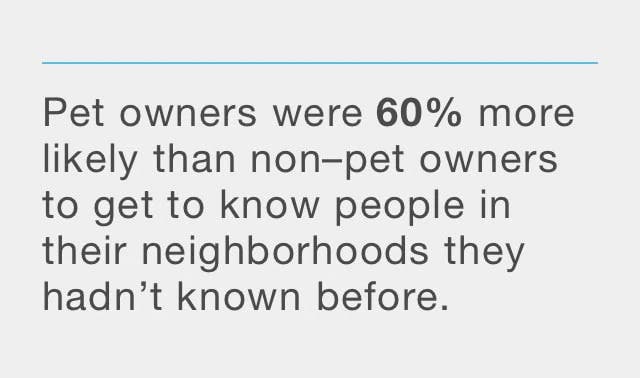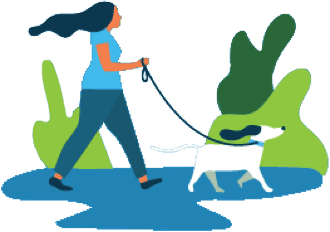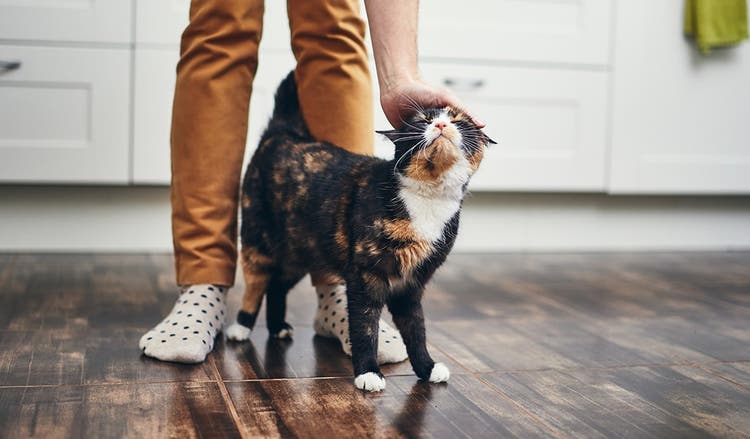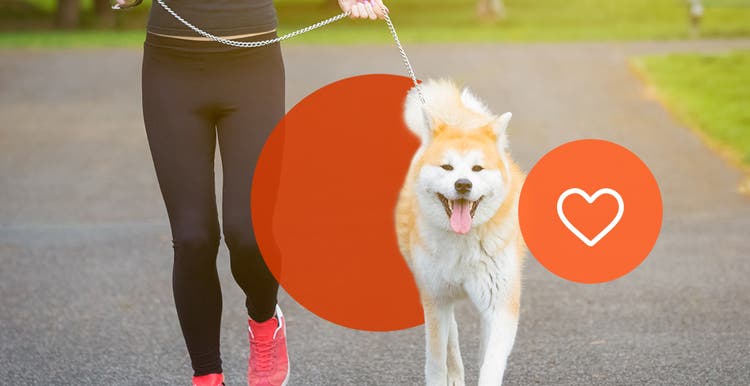Why cats and dogs can be good for your health.
As pet owners, we know that dogs and cats enrich our lives in so many ways: They provide companionship and comfort on a daily basis, and often have a preternatural sense for when we need cheering up or a distraction from stress. But the benefits of pet ownership don’t end there. Having a pet gives us an incredible variety of emotional, social and physical benefits.
1. Emotional Benefits of Dogs and Cats
A dog’s or cat’s unconditional love for their owner is the most obvious emotional benefit of having a pet. That love can help us get through hard times like divorce, death or daily stress.
Pets also give us something to focus on beyond ourselves, keeping us present in the here and now when we might otherwise be distracted by difficulties or problems.

Pets can help reduce fear in pre-op hospital patients by 37%.1
In fact, many studies show that interaction with pets can help lower stress hormones like cortisol, epinephrine and norepinephrine. Simply petting a dog or cat can help reduce stress even more than reading or talking with another person. Pets can even help reduce anxiety and fear better than support from a human companion.2
2. Social Benefits of Dogs and Cats
If you’ve ever taken your dog for a walk around the block, you know they have a knack for drawing people to you. Studies have shown that pets can be great icebreakers — they provide the perfect excuse to talk to a stranger and can help conversations blossom. And though you may not take your cat for walks, stories of your cat’s antics can come in handy when meeting new people — especially fellow cat owners!


3. Physical Benefits of Dogs and Cats
The good feelings we get from our pets translate to potential health benefits, too. Many researchers have examined the positive health benefits of pets on a variety of medical conditions. Results suggest having a pet may lower your blood pressure4 , decrease your risk of heart disease5 and decrease obesity6 .

Ninety-seven percent of physicians in family and general practice believe there are health benefits to having a pet7 .
Pets, particularly dogs, can help encourage us to get up and get moving, too. Most health professionals recommend at least 30 minutes of physical exercise daily — the perfect amount of time for a dog walk.
By helping us stay healthy, giving us comfort in times of high stress and providing ways to connect with others, our pets are more than just animals. We care for them and make sure they’re healthy and happy, our dogs and cats will surely return the favor.
11. Barker, S. B., Pandurangi, A. K., & Best, A. M. (2003). Effects of Animal-Assisted Therapy on Patients Anxiety, Fear, and Depression Before ECT. The Journal of ECT, 19(1), 38–44. doi: 10.1097/00124509-200303000-00008.
22. Beetz, A., Uvnäs-Moberg, K., Julius, H., & Kotrschal, K. (2012). Psychosocial and Psychophysiological Effects of Human-Animal Interactions: The Possible Role of Oxytocin. Frontiers in Psychology, 3. doi: 10.3389/fpsyg.2012.00234.
33. Skerrett, Patrick J. (2015, May 5). Pets can help their humans create friendships, find social support. Retrieved from https://www.health.harvard.edu/blog/pets-can-help-their-humans-create-friendships-find-social-support-201505067981.
44. Allen, K., Shykoff, B. E., & Izzo, J. L. (2001). Pet Ownership, but Not ACE Inhibitor Therapy, Blunts Home Blood Pressure Responses to Mental Stress. Hypertension, 38(4), 815–820. doi: 10.1161/hyp.38.4.815.
55. Levine, G. N., Allen, K., Braun, L. T., et al., (2013). Pet Ownership and Cardiovascular. Risk. Circulation, 127(23), 2353–2363. doi: 10.1161/cir.0b013e31829201e1
66. Reeves, M. J., Rafferty, A. P., Miller, C. E., & Lyon-Callo, S. K. (2011). The Impact of Dog Walking on Leisure-Time Physical Activity: Results From a Population-Based Survey of Michigan Adults. Journal of Physical Activity and Health, 8(3), 436–444. doi: 10.1123/jpah.8.3.436.
72014 Physician Survey. (n.d.). Retrieved from https://habri.org/2014-physician-survey.
Related Articles

Puppy Parenting: Our Downloadable Guide
New puppy? Whether this is your first go-round or your fifth, we know that so much goes in to raising healthy, happy pups. Check out our free guide, also available to download!

New Cat or Kitten: Our Downloadable Guide
Thinking about adding a feline to the family? There are so many emotional, social and physical benefits to owning a cat. Check out our free guide, also available to download!








